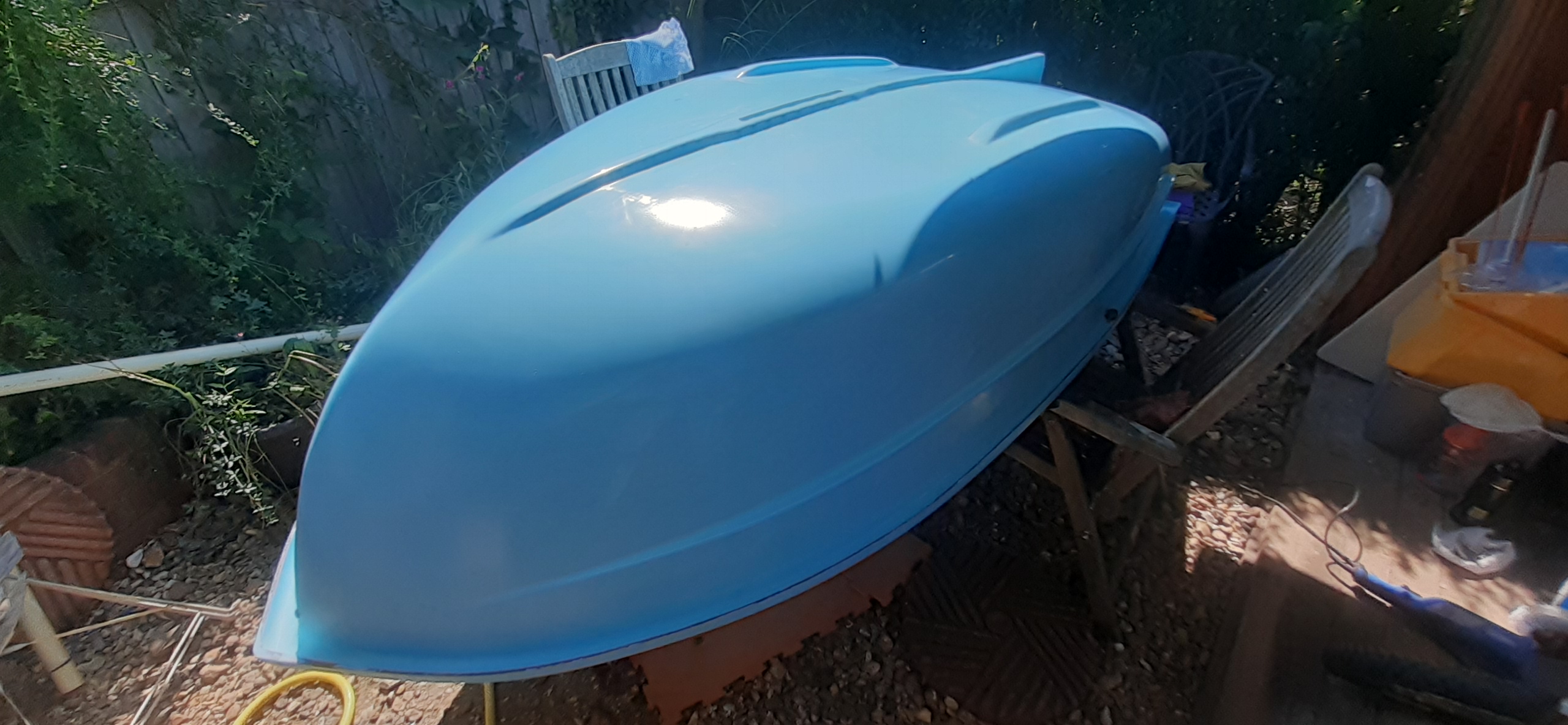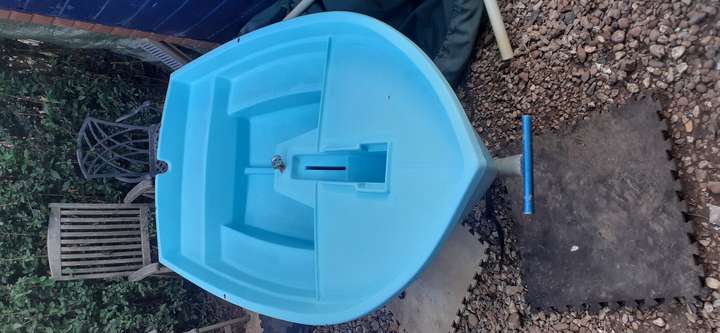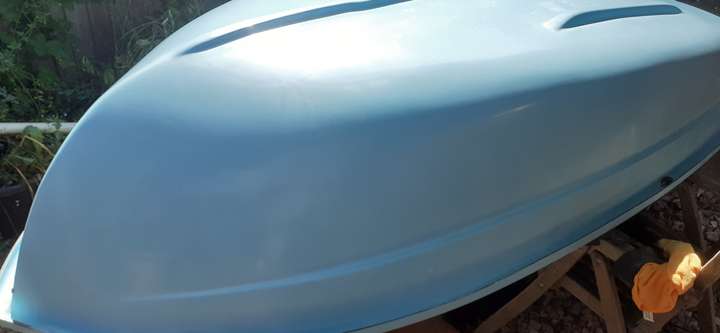Blue Peter Dinghy - Sanded, compounded, waxed

Over the past few days, I sanded and then polished the boat using a polishing compound (Roar910) and a rotary buffer tool. It's looking a lot smoother now, almost one colour on the whole.
In the main, I'm fairly happy with the result, it isn't as good as I was aiming for, but the boat is certainly in better condition than it was. If I get a few hundred ml of gelcoat at some point I've certainly got a few places I might put it, but, the boat is fine, it just doesn't meet the standards of 100% perfection.
I've attached a couple of photos here to show the result. When (if) the boat is upside down next, I'll take a shot of the bottom too.
I'm investigating other polishing compounds. The roar910 has removed the fine scratching (which I could barely see anyway), but it's not as glossy a finish as the boat originally had.
When applying this product, I found it was quite thick, so the heat (about 30 Celsius) and direct sunlight was not giving enough time to polish before it was dry, so I applied a misting of water every so often to keep it going for a few minutes. I spent perhaps 60 minutes polishing what had been a thin smear of the Roar 910 on the bottom of the hull and it definitely improved from when I did it (too briefly) the first time. It has certainly really shown up a couple of areas where I must have missed a grade of sandpaper because there are sanding scratches. Once I see what I get, I may go back and sand these out, but likely I'll wait until winter (I want to get the boat where it belongs - in the water!).
I had a really informative conversation with Ryan at mbfg.co.uk today and on his recommendation, ordered a bottle of Roar 950 and Roar UV wax. I'm looking forward to applying this on Friday when it arrives (fingers and toes crossed!). I'll take some comparative photos after each stage.
So, today I gave the exterior of the boat hull another polish with the Roar 910, which took about an hour.
Next I used the Roar 950 for about an hour. Here's the results.
I am really pleased with the results. When I started, I thought the Roar 950 wasn't doing much, but after a while I started to see a definite reflection in the hull at points. Furthermore, the areas where I've inadequately sanded through the grades and thus left some deep sanding scratches are really really visible now. I am viewing this as a positive. I've never done anything like this before, and it has been really confidence boosting to see that I will be able to bring the whole boat up to a lovely finish given a little more time.
I have polished the boat, now using the Roar UV Wax, sadly I forgot to take photos immediately, so the sun had gone down. Bear in mind when viewing them the different lighting and thus reflections, so it is harder to compare against the results from the previous steps. What I can say is that it looks pretty mirror like to me and I'm pleased with it.
The inside of the hull, seating etc, I did use the Roar 910, 950, and UV Wax on so water will bead and will hopefully aid cleaning etc, but I'm not so bothered about the perfection of that - vanity won't make it go any quicker. Again, the process has 'helpfully' highlighted a few small spots with sanding scratches that I'll have to work on when I next do some work.
I used a 1200W draper sander polisher to speed things along. Not knowing if it would even be the right tool and certainly how useful vs hand compounding and polishing, I bought cheaply - the cheapest I could find with a brand name I recognised and a variable speed. This tool was adequate for the job, but if I were doing more polishing, I'd try and find one with an electronic module that increased the power as the load increased since it slows noticeably as you apply the tool to the work. Also, if I could have found a reasonably priced small one (4 inch or less), I'd have got that since this is a beast and doesn't fit into every corner of the boat. My angle grinder is much smaller, but sadly lacks a speed controller, whereas my router and my drill do not spin slow enough at their slowest.
My biggest problem I encountered was that the lambs wool (fine not twisted) polishing pads I bought from Toolstation had a tendency to come away from the skirt. I think this was because the Velcro pad on the tool was sharp cornered enough and poor gripping enough that the pads would rotate and thus cut the threads. I found a fix for this was to add a protective shield - a piece of old shirt - as a loose fitting pad between pad and tool.















